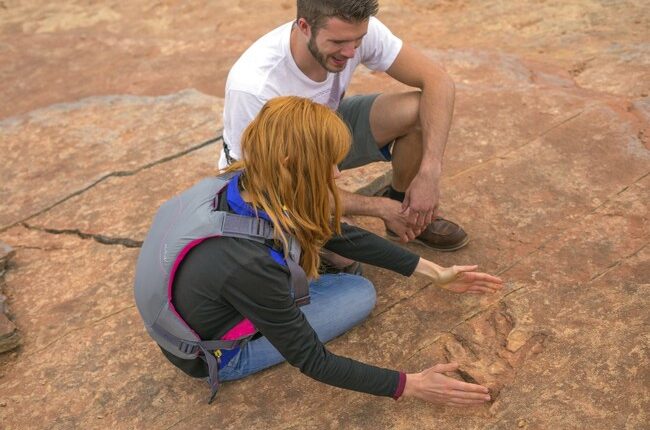
Kids and adults alike find dinosaurs fascinating. I remember loving them as a child and my grandson, Bubba, shares the same passion. We often bond over dinosaur videos, which is a shared interest that brings us closer together. Whenever a new dinosaur discovery is made, we eagerly read all about it, intrigued by these ancient creatures.
A recent discovery in the United Kingdom has captured the attention of many. What sets this finding apart is that it’s not just dinosaur bones or fossilized remains – it’s actually dinosaur footprints. These footprints provide a unique glimpse into the past and offer valuable insights into the world of dinosaurs.
Uncovered in a limestone quarry in southern England, these footprints were initially spotted by a worker digging up clay. This chance discovery led to the identification of a “dinosaur highway” comprising nearly 200 tracks. Remarkably, these tracks are estimated to be around 166 million years old, adding to the rich tapestry of dinosaur history.
The extraordinary find made after a team of more than 100 people excavated the Dewars Farm Quarry, in Oxfordshire, in June expands upon previous paleontology work in the area and offers greater insights into the Middle Jurassic period, researchers at the universities of Oxford and Birmingham said.
The Jurassic was mid-stream in the Mesozoic and something of a dino heyday. This was the time when gigantic sauropods, some weighing 80-90 tons and measuring almost a hundred feet long, wandered the land in herds. It would have been an amazing time to see – and that’s when these tracks were made. The AP story linked above continued:
“These footprints offer an extraordinary window into the lives of dinosaurs, revealing details about their movements, interactions, and the tropical environment they inhabited,” said Kirsty Edgar, a micropaleontology professor at the University of Birmingham.
Four of the sets of tracks that make up the so-called highway show paths taken by gigantic, long-necked, herbivores called sauropods, thought to be Cetiosaurus, a dinosaur that grew to nearly 60 feet (18 meters) in length. A fifth set belonged to the Megalosaurus, a ferocious 9-meter predator that left a distinctive triple-claw print and was the first dinosaur to be scientifically named two centuries ago.
An area where the tracks cross raises questions about possible interactions between the carnivores and herbivores.
Interactions – that’s the key.

















